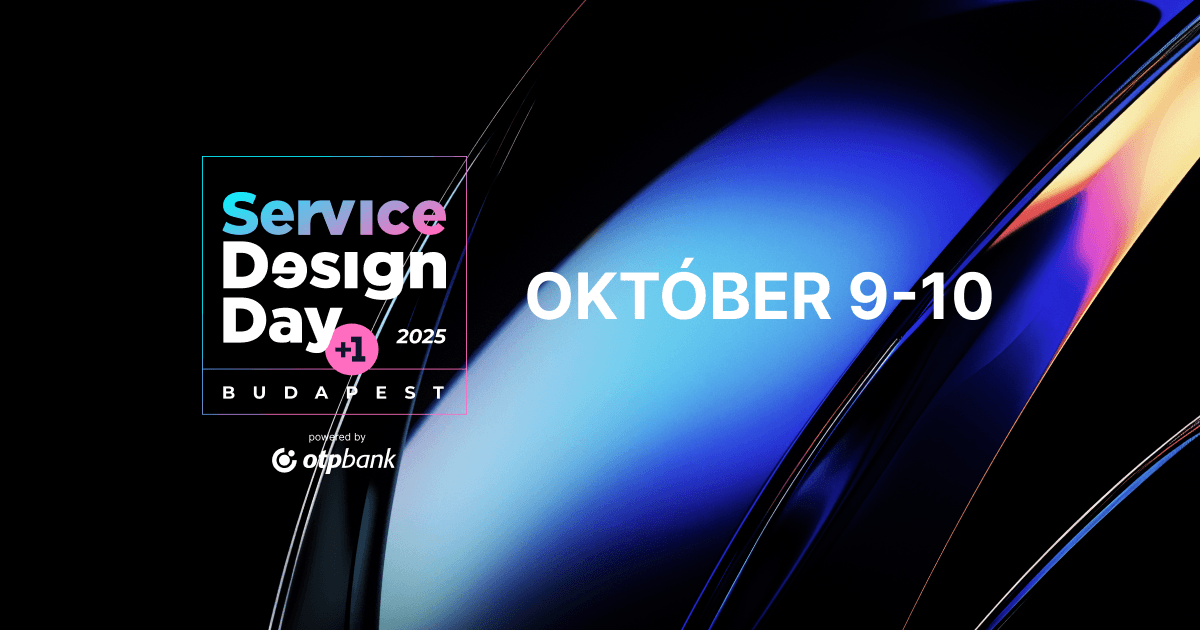
What does it mean to carry out an AI development project beyond the hype? Where can a project fail, and what is needed to bring real business value? First-hand experiences from a development team.
About the Event
This year, on October 9–10, the Service Design Day was held in Budapest at the CEU building. The Hungarian service design community gathered again to explore the latest trends and experiences. The inspiring presentations covered the diverse application areas of service design, including branding, customer experience, and employee experience. The event featured talks from corporate decision-makers and company leaders who shared their insights on corporate culture, innovation, and the implementation of service design projects. Participants could also choose from 11 different workshops, where they worked with leading Hungarian professionals on current and practical topics. FrontEndART Software Ltd. was represented by our CEO Dr. Tibor Bakota, who gave a talk on real-world AI projects, outlining the successes, challenges, and lessons learned from integrating artificial intelligence.
Real AI Developments – Behind the Shine
AI projects often appear dazzling on the surface, but in practice, many obstacles arise. Demos may show ten lines of code, but behind the scenes, ten thousand commits, data preparation, integration, fine-tuning, and maintenance keep the system alive. AI is really just the tip of the iceberg: most of the work and costs are in the data and engineering processes. The magic doesn’t lie in the model – it’s in the infrastructure.
Is Data the Weak Spot of AI?
The biggest challenge is often the data. A PDF is not a data source – it's a data graveyard. Since every document has a different structure, normalization requires significant effort. If the input is noisy, AI can't work miracles. Even RAG (retrieval-augmented generation) is not omnipotent – it may seem simple, but in practice, text chunking, embedding quality, and prompt length management all influence the result. Often, more advanced approaches like GraphRAG or ontology-based systems are needed to overcome a real challenge: hallucinations in AI systems.
Agent Hype and the Real Costs
One of the latest waves in AI hype is the AI agent, but in reality, a well-structured workflow is often more stable and cost-effective. Autonomous systems require complex state management and memory, which are expensive to maintain. Moreover, the real difficulties lie not in the models, but in integration: legacy systems, incompatible APIs, mismatched databases, scalability issues – and this is where most projects fail. Costs can also escalate quickly. What runs cheaply as a proof-of-concept (PoC) can become orders of magnitude more expensive in a production environment. Token-based pricing can become a "horror" cost in production, as resource usage, number of requests, and token consumption differ drastically between development and a live system. Thus, a seemingly tiny price (e.g. $0.01 / 1M tokens) can balloon into several thousand dollars per month with real traffic – especially if there's no caching, batching, or cost-aware RAG strategy in place. AI consumes not only GPU but also budget – even when it works well, people often expect certainty, whereas AI works with probabilities. Therefore, the best solution is a co-pilot approach, complemented by human review and feedback.
AI Development is Not a One-Off Project
Artificial intelligence requires continuous attention. Model updates, API changes, data drift, and so-called prompt evolution make the MLOps mindset essential. Those who don’t maintain their AI will fall behind quickly. Tibor highlighted that data – and controlling it – is the foundation of everything. RAG alone is not enough, not everything needs an agent, integration is the most costly aspect, and long-term maintenance is crucial. AI development is no cakewalk – but those who build mindfully and learn from mistakes can generate real business value with it.